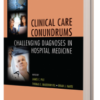E-cigarette Smokers Less Exposed to Carbon Monoxide
NEW YORK—Smokers who switch to e-cigarettes – even if only some of the time – may dramatically reduce their exposure to air pollutants including carbon monoxide and acrolein, a British study suggests.
Researchers gave e-cigarettes to 40 smokers who said they wanted to quit. After four weeks, the 16 participants using only e-cigarettes had about an 80% drop in exposure both to carbon monoxide and to acrolein, a harmful breakdown product that is also in some e-cigarettes’ vapor. Acrolein is known to irritate exposed tissues and can destroy cilia.
The 17 participants who swapped some regular cigarettes for the electronic version had a 52% decline in carbon monoxide exposure and a 60% decline for acrolein, according to a report online September 3 in Cancer Prevention Research.
To get the most benefit from switching to e-cigarettes, smokers need to completely give up traditional cigarettes, lead study author Dr. Hayden McRobbie, of the Wolfson Institute of Preventive Medicine at Queen Mary University of London, said by email.
“Smokers may get some encouragement from the finding that there is some potential health benefit as soon as they start the process,” Dr. McRobbie said.
While tobacco control advocates fear that e-cigarettes may give rise to a new generation of nicotine addicts who eventually transition to conventional cigarettes, the current study adds to a small but growing body of evidence suggesting the devices might benefit the health of people who already smoke.
An international analysis of published research by the Cochrane Review in December concluded the devices could help smokers quit but said much of the existing research on e-cigarettes was thin.
Even though the current study points to another potential benefit of e-cigarettes, more evidence is still needed from longer and larger trials before scientists can draw firm conclusions about any safety advantages, Dr. Nancy Rigotti, director of tobacco research at Massachusetts General Hospital in Boston, said by email.
“It is exactly the type of incremental, careful work that is needed but it is not yet a definitive study,” Rigotti, who wasn’t involved in the study, said.
Study participants were typically in their 40s and had attempted to quit at least twice before joining the trial. All of them were offered the same type of e-cigarette and encouraged to completely abandon traditional cigarettes.
Researchers measured carbon monoxide in participants’ breath one week before switching to e-cigarettes, on the day they switched, and again four weeks later. They followed the same schedule for testing urine for exposure to acrolein.
A limitation of the study, the authors acknowledged, is that it only included people with a desire to quit smoking, making it possible the results would be different for smokers with no intention of quitting. It’s also possible that the specific model of e-cigarette used in the study might not be representative of other devices.
Still, the findings suggest smokers should be told e-cigarettes may curb their exposure to toxic chemicals, Dr. Riccardo Polosa, head of the tobacco research center at the University of Catania in Italy, said by email.
“This study adds to the evidence that e-cigarettes are much less harmful compared to conventional cigarettes,” said Polosa, who wasn’t involved in the study.


